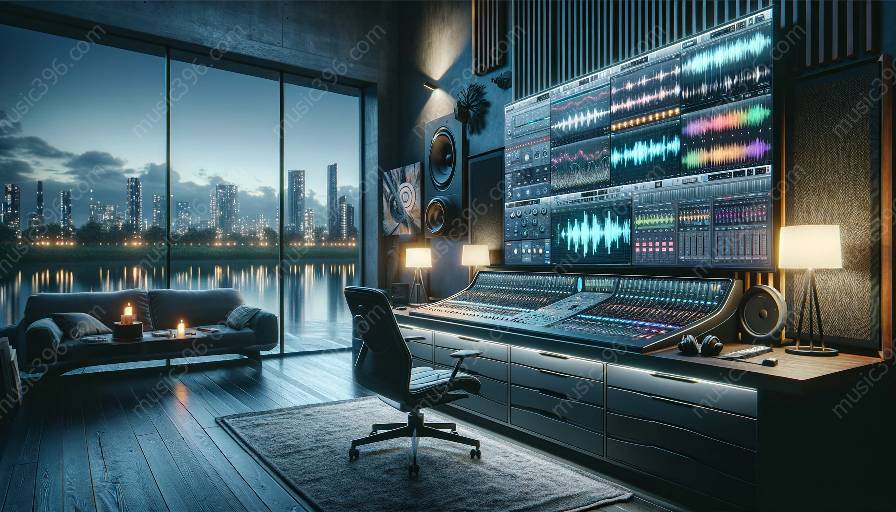Music production and sound engineering have been revolutionized by the innovative integration of hardware devices with powerful audio software applications. This integration enables unparalleled creativity and efficiency in producing high-quality music and sound. In this article, we will explore the pivotal role that audio software plays in supporting and enhancing the integration of hardware devices in music production and sound engineering.
Understanding Audio Software
Audio software refers to a wide range of computer programs and applications designed specifically for recording, editing, processing, and mixing audio. These software tools provide musicians, sound engineers, and producers with the capability to manipulate sound in intricate and transformative ways. Audio software applications come in various forms, including digital audio workstations (DAWs), virtual instruments, audio effects plugins, and more. The rapid advancements in audio software technology have significantly expanded the scope and possibilities of music production and sound engineering.
Seamless Connectivity with Hardware Devices
One of the key features of modern audio software is its seamless connectivity with a diverse array of hardware devices. This integration allows musicians and sound engineers to leverage the benefits of both software and hardware, resulting in a comprehensive and versatile toolkit for their creative endeavors. Audio software applications support the integration of hardware devices such as synthesizers, MIDI controllers, audio interfaces, and hardware effects processors. By seamlessly interfacing with these hardware devices, audio software empowers users to access advanced sound-shaping capabilities and tactile control over their music production process.
Enhanced Functionality and Control
Audio software serves as the central hub for controlling and integrating multiple hardware devices within a music production or sound engineering setup. Through the use of MIDI (Musical Instrument Digital Interface) and other communication protocols, audio software applications enable users to synchronize and manipulate the functionality of hardware devices in real-time. This heightened level of control offers unparalleled flexibility in shaping and modulating sound, allowing for precise adjustments and instant feedback during the creative process. Furthermore, audio software often provides intuitive interfaces and visual representations of connected hardware devices, streamlining the workflow for musicians and sound engineers.
Sequencing and Automation
Integration of hardware devices with audio software extends beyond mere connectivity, with many software applications offering advanced sequencing and automation capabilities. This allows for the seamless synchronization of hardware devices with the digital audio workspace, enabling precise control over the timing and arrangement of musical elements. Sound engineers can program intricate automation sequences to modulate parameters of hardware synthesizers, effects units, and mixing consoles, creating dynamic and evolving sonic textures. The integration of hardware devices with audio software for sequencing and automation provides an unprecedented level of creative freedom and precision.
Efficient Signal Processing and Mixing
Audio software applications play a crucial role in streamlining the signal processing and mixing workflow within a professional studio environment. By integrating hardware devices such as high-quality microphone preamps, analog compressors, and equalizers with the digital audio workspace, sound engineers benefit from the unique sonic characteristics and analog warmth of these devices. Audio software seamlessly accommodates the integration of hardware processors into the mixing and mastering process, allowing for a hybrid approach that combines the best of digital precision and analog coloration.
Real-time Collaboration and Performance
Audio software's support for the integration of hardware devices extends beyond the confines of the studio, facilitating real-time collaboration and live performances. Many audio software applications are designed to interface with hardware controllers and performance-oriented devices, enabling musicians to unleash their creativity in a live setting. The seamless integration of hardware devices with audio software empowers performers to express themselves dynamically through improvisation, real-time effects manipulation, and interactive control over the sound output.
Conclusion
The integration of hardware devices in music production and sound engineering is made possible and enhanced through the sophisticated capabilities of audio software applications. The seamless connectivity, enhanced functionality, sequencing and automation, efficient signal processing, and real-time performance support offered by audio software play a pivotal role in shaping the modern landscape of music production and sound engineering. As technology continues to advance, the synergy between audio software and hardware devices will undoubtedly drive further innovation and creativity in the realm of music and sound.


























